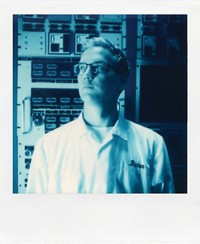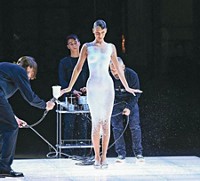Advertisement
Grab your lab coat. Let's get started
Welcome!
Welcome!
Create an account below to get 6 C&EN articles per month, receive newsletters and more - all free.
It seems this is your first time logging in online. Please enter the following information to continue.
As an ACS member you automatically get access to this site. All we need is few more details to create your reading experience.
Not you? Sign in with a different account.
Not you? Sign in with a different account.
ERROR 1
ERROR 1
ERROR 2
ERROR 2
ERROR 2
ERROR 2
ERROR 2
Password and Confirm password must match.
If you have an ACS member number, please enter it here so we can link this account to your membership. (optional)
ERROR 2
ACS values your privacy. By submitting your information, you are gaining access to C&EN and subscribing to our weekly newsletter. We use the information you provide to make your reading experience better, and we will never sell your data to third party members.
Education
Newscripts
Danger! H in H2O, Organic Dry Cleaning, Nano's Journalists
by Bethany Halford
October 23, 2006
| A version of this story appeared in
Volume 84, Issue 43
Danger! H in H2O

Folks looking to beat Kentucky's heat this past summer with an illegal dip in the cascading fountains at Louisville's Waterfront Park found ominous "Keep Out" signs posted at the popular swimming spot. "Danger!" warned the no swimming posts, "Water Contains High Levels of Hydrogen."
Hydrogen? In water? You don't say!
The signs, as any chemist knows, were bogus. "Water without hydrogen would warrant warnings," proclaimed a headscratcher of a headline in the local newspaper, the Courier-Journal. Thanks to Eileen Segal of Easton, Pa., for directing us to the story, which left some Louisvillians all wet.
Unusually high bacteria levels in the park's fountains during the summer of 2005 prompted the Waterfront Development's executive director, David Karem, to have the signs made up for this summer—at public expense.
Rather than reveal the water's true health hazard, "Karem said he was counting on a lack of understanding about water's chemical makeup," the Courier-Journal reports. "He thought that suggesting a link to one of the world's most dangerous weapons—the hydrogen bomb—might keep them from jumping in."
For a while, the signs cut down on some of the banned bathing. But on the summer's hottest days, dozens of daredevils risked a dip in the hydrogen-rich pools. Lucky for them, some plumbing changes have brought the pool's bacteria levels back to normal.
Organic Dry Cleaning

Simeen Sattar, who is spending a sabbatical as a visiting professor at Georgetown University, spotted another example of chemically confounding signage during her commute in Washington, D.C. "I pass by a dry cleaner near Dupont Circle every day with the proud, if cryptic, banner: 'Yes, we use organic solvents for your better health, environment, and quality,' " she writes.
Dupont Circle is just a few blocks from ACS headquarters (and the Newscripts gang could use a little exercise), so we went to check it out. It was worse than we thought. Not only was the chemistry confusing, but the sign actually reads: "Yes, we use organic solvent for your health, better quality, environment."
It doesn't surprise us that Sattar was gracious enough to correct the banner's grammar. She usually teaches at Bard College in Annandale-On-Hudson, N.Y., the highly literary alma mater of two C&EN reporters.
Nano's Journalists
While certain signs may be discouraging, the future of the public's understanding of science might not be as bleak as it seems. If 11-year-old aspiring journalist Bethany Maynard is any indication, there's a generation of inquisitive and science-savvy youngsters out there, with video cameras.
Maynard, a sixth-grader in Fairfax, Va., recently focused her investigative lens on the topic of nanotechnology. After getting the basics on nanotech from her father, Andrew Maynard, chief science adviser at the Woodrow Wilson Center's Project on Emerging Nanotechnologies, Bethany puts the Environmental Protection Agency's Barbara P. Karn, currently a visiting scientist at the Wilson Center, in the hot seat. Bethany's politeness can't disguise her reporter's instinct to delve deeply into the subject. She even asks Karn if green nanotechnology will be able to help grow gardens on Mars.
Bethany and her cameraman, her nine-year-old brother Alex, also do some hands-on investigation, testing how impervious the stain-resistant nanotech coating on their father's $70 silk tie is to ketchup, mustard, and coffee.
"Nanotechnology is exciting because imagination is involved in deciding what we can do with it," Bethany tells C&EN. Her eight-minute video can be found online at nanotechproject.org/76.
This week's column was written by Bethany Halford. Please send comments and suggestions to newscripts@acs.org.




Join the conversation
Contact the reporter
Submit a Letter to the Editor for publication
Engage with us on Twitter